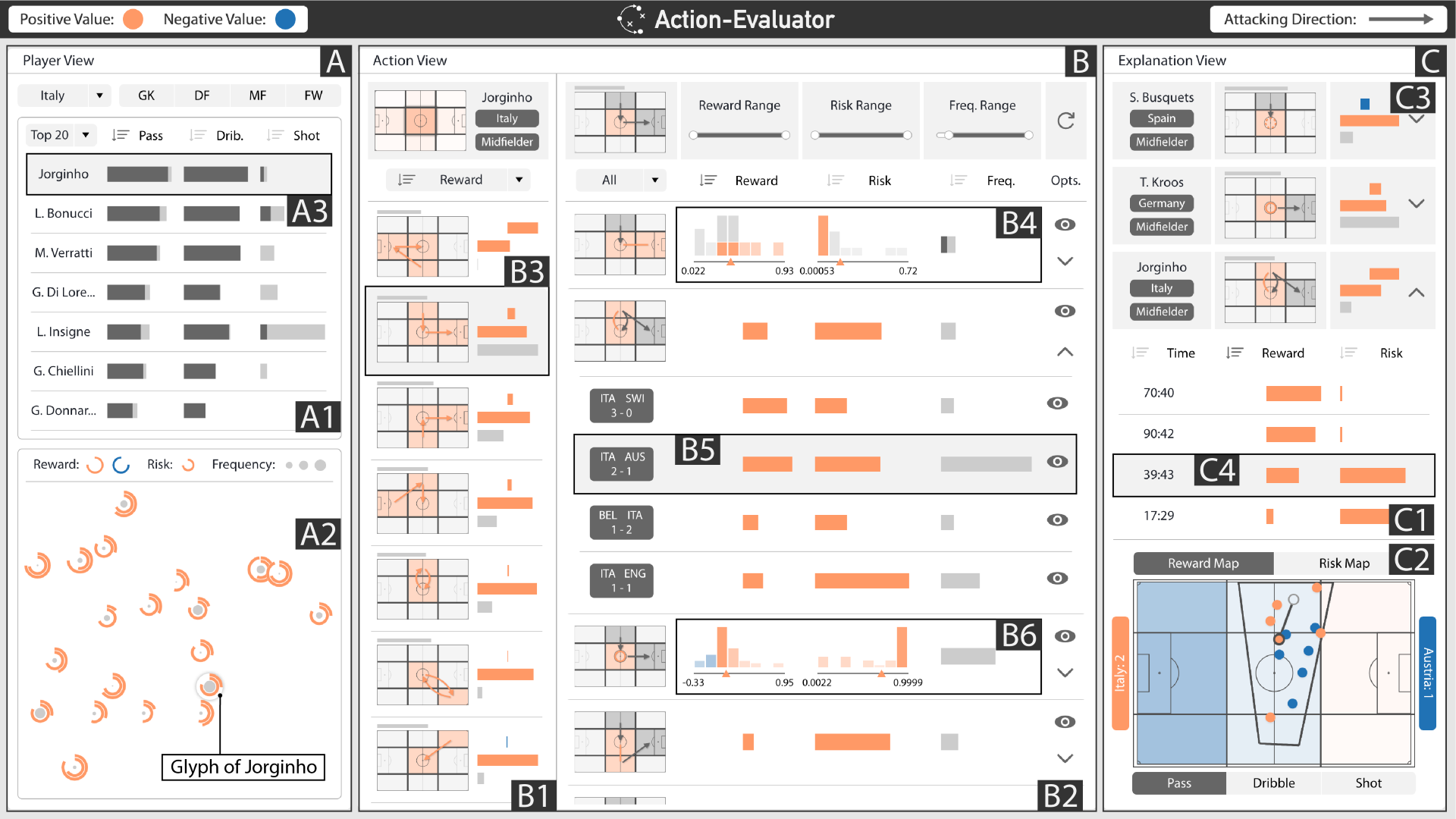Action-Evaluator: A Visualization Approach for Player Action Evaluation in Soccer
Anqi Cao, Xiao Xie, Mingxu Zhou, Hui Zhang, Mingliang Xu, Yingcai Wu
DOI: 10.1109/TVCG.2023.3326524
Room: 106
2023-10-25T23:00:00ZGMT-0600Change your timezone on the schedule page
2023-10-25T23:00:00Z

Fast forward
Full Video
Keywords
Soccer Visualization;Player Evaluation;Design Study
Abstract
In soccer, player action evaluation provides a fine-grained method to analyze player performance and plays an important role in improving winning chances in future matches. However, previous studies on action evaluation only provide a score for each action, and hardly support inspecting and comparing player actions integrated with complex match context information such as team tactics and player locations. In this work, we collaborate with soccer analysts and coaches to characterize the domain problems of evaluating player performance based on action scores. We design a tailored visualization of soccer player actions that places the action choice together with the tactic it belongs to as well as the player locations in the same view. Based on the design, we introduce a visual analytics system, Action-Evaluator, to facilitate a comprehensive player action evaluation through player navigation, action investigation, and action explanation. With the system, analysts can find players to be analyzed efficiently, learn how they performed under various match situations, and obtain valuable insights to improve their action choices. The usefulness and effectiveness of this work are demonstrated by two case studies on a real-world dataset and an expert interview.